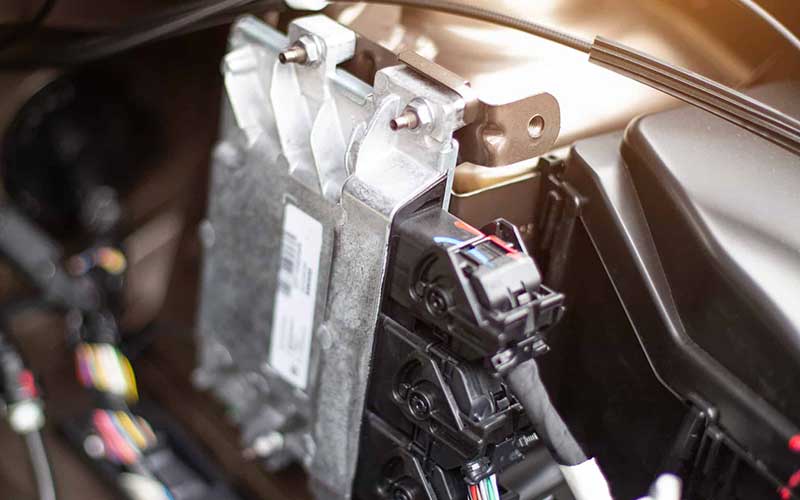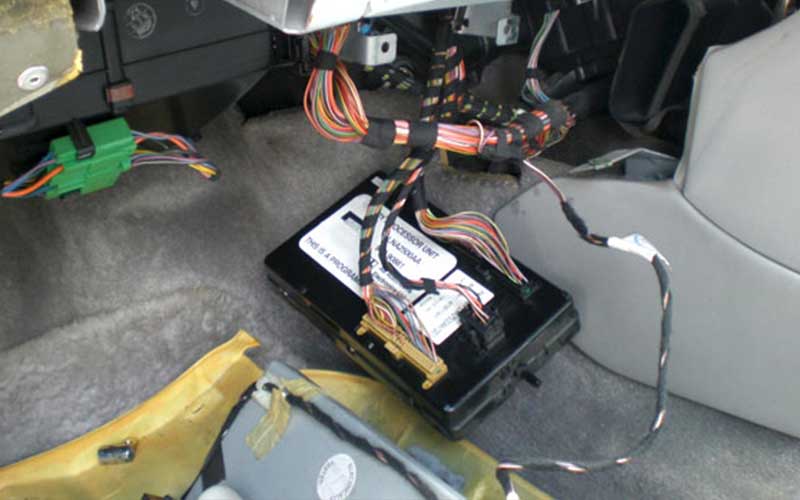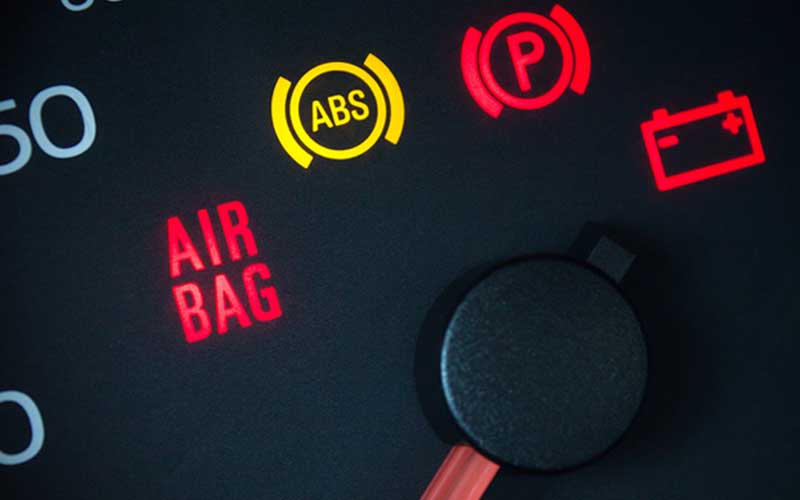Does your dashboard show certain signs or indicators? Are you suspect that your car has a faulty body control module? Would you want to know the Symptoms of a Bad Body Control Module?
Do not fret anymore because you have the answers with you.
The body control module should be among your first inspection points if your vehicle has problems. This component controls the entire electrical system in your car, so if it malfunctions, you can encounter many issues.
The body control module of a car, even though it’s uncommon, can have serious operating problems, including failure. There may be several disturbing symptoms present when this happens, many of which can be very unsettling.
In this article, we’ll go through several signs that would help you determine whether your automobile is experiencing issues due to a malfunctioning body control module.
Let’s begin!
What Happens When a Body Control Module Goes Bad?
An issue with the body control module will result in problems with one or more of the systems that operate under its control. The first indicator of a problem could be difficulty unlocking or opening a door. Maybe the central locking has failed, or the keyless entry, if fitted, refused to work.
What’s a Body Control Module?

To ensure correct operation, modern cars rely on a sophisticated communication network. These terminals, sensors, and wires are part of a network that provides feedback to various electrical computer components. A controlling computer module is almost always present in a car’s key systems.
Many of the vehicle’s technological functions are managed by the body control module computer. Other names include the central controller and the body control unit.
The body control module collects data from several sensors & switches located around the car to regulate systems like the lighting, door locks, and wipers. The body control Module is a component that, in some cars, is also in charge of the audio and climate control systems.
Although the body control module is usually found in the dashboard close to the fuse compartment, the location of the body control module may differ depending on the car. The use of multiple body control modules in a car has been reported in various circumstances. The lighting & wipers, for instance, might each have their Body control module.
The fuse box of the car, as well as other sensors & switches spread out throughout, are all connected to the body control module. The body control module may make judgments concerning how to regulate each system by using these connections to monitor circumstances within the car.
For instance, the body control module will transmit a signal to get the taillights on if it notices that the headlights are on. The body control module will send a signal to get the rain sensor on if it detects that the windscreen wipers are on.
Every electronic feature of the car is described in detail in the body control module programming. The body control module can suitably control these characteristics thanks to this knowledge.
By illustration, the body control module will be aware of getting the taillights on if you turn on the headlights. When the wipers are activated, the body control module is informed about activating the rain detector or sensor as well.
The body control module continuously assesses the state of the car and decides how to regulate the various components. As a result, the car’s electronic components can operate as a unit productively & efficiently.
Also Read: Fuel Pump Fuse Location (How to Locate the Fuel Pump Fuse)
What Are the Symptoms of a Bad Body Control Module?
The body control module is one of the three primary controller units in your car. It essentially regulates most of your car’s auxiliary systems, which are unrelated to the engine or transmission.
It can produce a variety of symptoms if it is damaged or begins to malfunction, some of which are sporadic and will often leave you perplexed.
If the Body control unit totally malfunctions, it will be much simpler to diagnose because the power train control module will typically detect the malfunction if it can’t interact with the body control unit.
The following are among the most typical indications of a damaged body control unit:
1. Warning Lights on The Dashboard
The ability of the Body control module to interface with systems like the power train control module, airbag control module, and anti-lock braking module will allow it to monitor their performances. Because it can no longer connect with the various systems, this can create flashing warning lights on the dashboard due to perceived issues.
As your car is unlikely to experience multiple system failures simultaneously in this situation, it’s likely to be very simple to determine an issue with the Body control module. The Body control module or the Controller Area Network (CAN) bus system is more likely to be at fault.
To confirm that a communication error is indeed causing the warning lights, you may have to verify each system separately at first since the source of the issue might not be immediately apparent.
You may occasionally get the error code U0001 if there is a problem with the CAN bus communication network. It’s possible that damage to the wiring loom or corroded wire in this situation led to a system shortage. The integrated power module (TIPM) may be the cause.
2. Failure of the Central Locking System or Security System
One or maybe more of the systems that the body control module regulates will have trouble operating if it has a defect.
An issue can become apparent when you attempt to unlock the automobile or access a door. Both the keyless entry system and the central locking system could malfunction. It’s also possible that you can’t turn off the immobilizer or alarm, and you might find that it takes several efforts to do so.
You must rule out issues with the central locking system and any other involved systems before making a diagnosis of a body control unit issue. Given that multiple malfunctioning modules can be to blame for these issues, you might need the assistance of an auto electrical engineer.
3. The Engine Won’t Start
The key must turn the ignition on and transmit a signal to the starter engine/motor to turn the engine on. Any issues with the Body control module, which often controls the ignition, could result in the vehicle not starting. This is as well the reason that before a replacement or new key for the car will operate, it must be coded.
When you press the start engine button or turn the key in the ignition, the body control unit verifies that the right key is in the ignition (or your pocket if your car has an intelligent wireless key ). The engine won’t start until the key ID matches the ID kept in the Body control module.
The engine won’t start when there are issues with communication between the Body control module and the remote keyless entry receiver or ignition switch.
4. The Battery Keeps Draining
The battery in the body control unit may discharge due to a malfunctioning circuit board or a short circuit. An excessive amount of current being utilized by a system under the control of the Body control module, known as a parasitic drain, may be the cause of this.
Lighting, parking sensors, and car alarm systems are just a few of the electrical systems that the Body control module may regulate. Electrical components that need to be off may be turned on as a result of a body control module failure. This may cause the battery to discharge if the car is left parked overnight or the engine/motor is turned off.
An illustration of this would be when the radio stays on when the engine is off, or the interior lighting does not turn off when the car is locked.
5. Electrical Systems Not Working as They Should (Or Intermittently)
The majority of a vehicle’s electrical systems are made easier to use by the body control unit. One or maybe more of these supplementary or auxiliary components may experience issues if the body control unit has problems.
Finding the source of the issue may be challenging if the body control unit is still in use and the power train module has yet to receive any error codes. To test if the issue is resolved, replacing the body control unit with a refurbished or new one is important and more straightforward.
Electric windows, central locking, headlights, head units, wipers, door locks, dashboard instrumentation, parking sensors, the horn, & interior lighting are just a few examples of the intermittent problems that a defective body control unit can bring on.
How Can I Prevent My Body Control Module from Having Problems?

You can take several steps to lessen the likelihood of issues with your Body control module.
You may check to see if the Body control module & fuse box has loose connections. Something else you may do is keep the Body control module away from electrical surges and high temperatures.
If you need to replace your Body control module, make sure you use a module made especially for your vehicle. An incorrect module selection can result in new issues.
How Do I Repair a Vehicle Body Control Module?
Repairing a Body control module at home is typically not an option. A defective Body control module is mostly brought on by a failure of the module, which necessitates professional overhaul or repair. A new or refurbished module can usually be purchased for less money than the existing unit.
A few holding bolts and electrical connectors are typically needed for a Body control module’s physical replacement, which is not difficult to do. The “hard” or “difficult” part is setting up the new device on the car, and this will not be possible unless you’ve got the correct tools.
You can swap out a damaged Body control module for a working one from an online auction site or a salvage yard if your car is an older model with an electrical system that isn’t as complex. The Body control module must match the one you’re changing and have the same (S/N) serial numbers for this to function.
Also Read: How to Test a Solenoid (The Best Way)
How Much Does It Cost to Replace Body Control Module?
Depending on the model and make of the vehicle, the replacement cost of the body control module varies. This is because labor costs and associated costs for replacing specific Body control modules differ.
Nevertheless, the average cost of replacing a Body control module is described below.
The average cost of replacing a Body control module is between $300 and $600. The price of the failing module itself is the main determinant of this cost.
Currently, shipping expenses related to locating and acquiring such Body control modules can also impact the cost of these repairs as Body control module availability has become a kind of a problem.
Frequently Asked Questions – Symptoms of a Bad Body Control Module
What does a body control module do on a vehicle?
Specifically, the BCM coordinates the activation of the auto electronics components and controls load drivers. The main structural component of the system in charge of regulating a component is a BCM, which consists of microcontrollers and connectors.
How do you know if the BCM module is bad?
A malfunctioning BCM triggers dashboard instrument cluster error & warning lights. If the BCM cannot correctly read the sensors, these lights may flicker on and off. The BCM’s communication with other vehicle control modules may have an impact on how well your vehicle performs.
Can I drive with a bad BCM?
If Your BCM Is Faulty, can you drive it? Although it is generally not advised, it’s theoretically conceivable to drive a car with a damaged BCM. This results from a computer module’s impending failure, which is unforeseeable.
Can a BCM be repaired?
Usually, a broken BCM cannot be repaired and must be replaced. Depending on where the module is located in your car, it may be challenging to prevent a module failure caused by water, vibration, heat, or age.
Will a bad ECM throw a code?
The engine’s fuel settings & ignition timing may become erratic if there is a problem with the ECM.
Will disconnecting the battery reset BCM?
Reconnecting the battery is required to complete the BCM reset. Through the BCU/BCM and other electrical components of the car, the electrical supply is restored as a result.
Is an ECU and BCM the same thing?
By transmitting and receiving signals through the nerves (vehicle BUS), this module can be compared to the brain managing various bodily components (different ECUs). To communicate with other ECUs, a body control module unit, which is an ECU, also serves as a hub or gateway.
Where is the body control module?
Under the dash, near the middle of the car, on the driver’s side, is where you’ll find the BCM, or body control module. Search for the firewall by looking to the right of the steering column. The shape should be a little black rectangle.
Conclusion – Symptoms of a Bad Body Control Module
Several problems, mostly involving electrical components, can be caused by a broken Body control module. Avoid delaying repairs and take care of the problem immediately if possible.
Thankfully, checking for a faulty Body control module is rather simple & can be carried out at home using a few basic tools. Take your automobile to a qualified mechanic for a full diagnosis & repair if you suspect your Body control module may fail.

